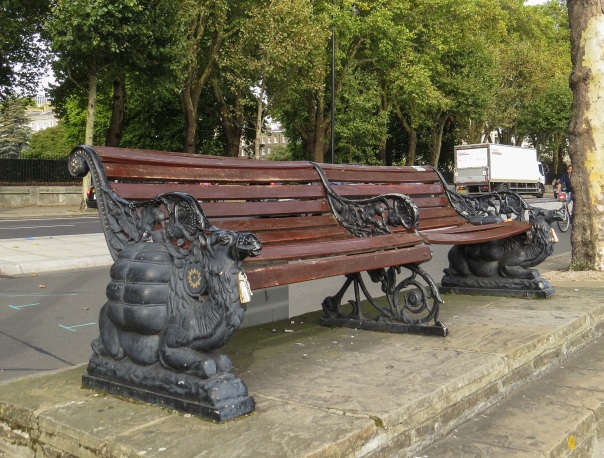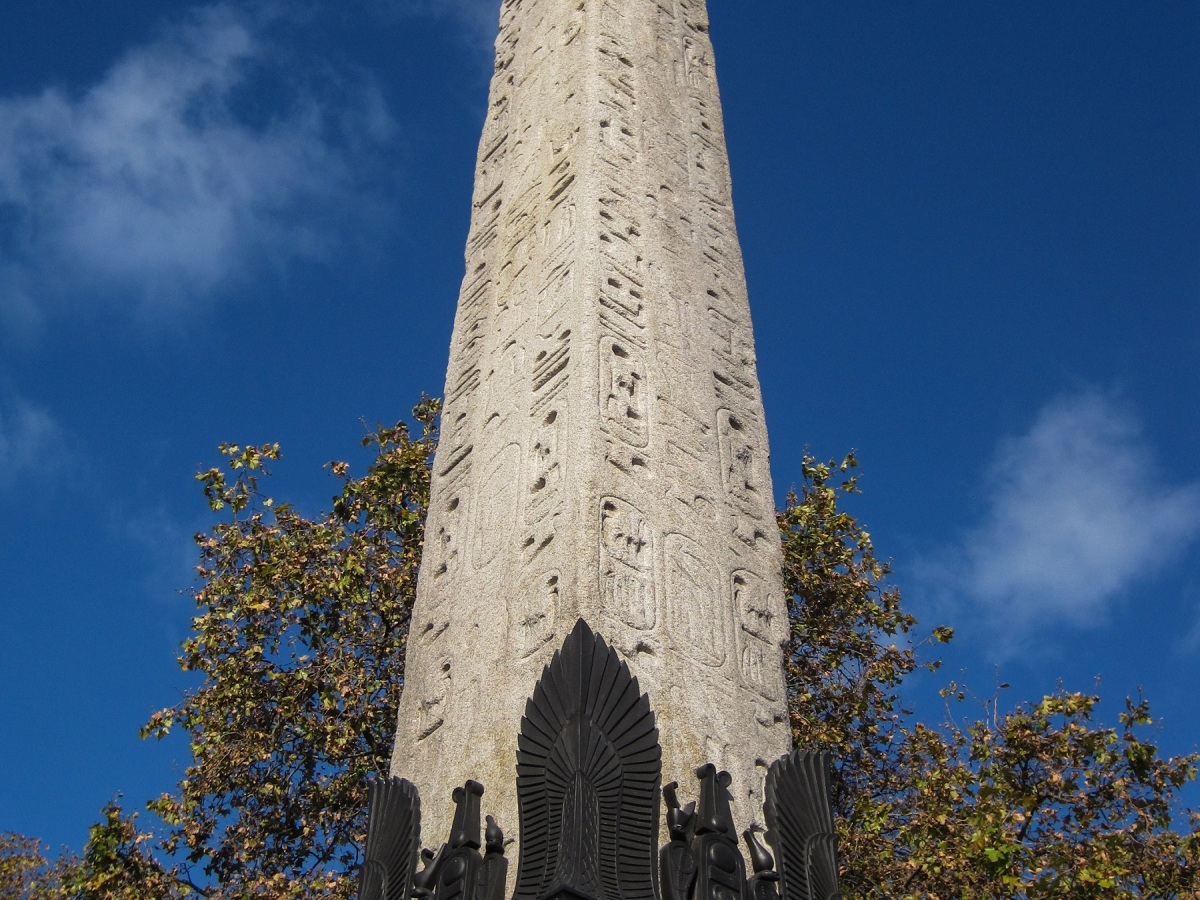Who do you sphinx you are? The history behind the camel and sphinx benches on Victoria Embankment
The story behind these curious Egyptian benches by the Thames.

Take the load off and rest your weary legs here: One of the camel benches on the Victoria Embankment

The Egyptian-themed benches were designed to complement Cleopatra’s Needle
Anyone who has strolled along the Victoria Embankment may have noticed the ornate benches alongside the river. Dotted along the north of the Thames between Battersea and Blackfriars Bridges, the cast iron and wooden benches provide more than just a place to rest your weary bones. Unlike the pedestrian-friendly South Bank, the north bank of the Thames isn’t as pleasurable to walk along due to the busy traffic churning out fumes. As a result, all the benches face the river so you can sit with your back to the traffic and enjoy the view.
The benches are one of the many ornamental details created for the Embankment by English architect George John Vulliamy (1817-1886). As well as the benches, he is also responsible for the sphinxes and pedestal for Cleopatra’s Needle and the ‘dolphin’ lamps on both sides of the river. In the centre of London, the Thames used to be a lot wider until the 19th century, city bosses needed a new sewage system to cope with the rapidly expanding population. Sir Joseph Bazelgette (1819-1891) came up with a scheme to reclaim some 22 acres of marshland, creating a new sewage system and a new road, taking the pressure off The Strand. In the typically Victorian way, the new Embankment needed to have suitable ‘street furniture’ to give London – heart of the British Empire – a look of prestige and style.

A Sphinx bench (left) and a Camel

I’ll support you: The camel supporting the bench is sitting down
Hired as the Superintending Architect of the Metropolitan Board of Works, Vulliamy created the ‘Dolphin’ (actually, sturgeon fish!) street lamps along the retaining river wall in 1870. Several years later, he decided to look to Egypt for inspiration when it came to designing the benches, a place he had visited in the early 1840s. Pre-empting the arrival of Cleopatra’s Needle – a gift from Egypt – in 1878, Vulliamy opted for a design which would complement the ancient monument when it eventually arrived. Near the site of the Needle itself, the benches in the City of Westminster feature armrests of Sphinxes, before camel armrests appear in the City of London section of the Victoria Embankment. The benches were made by Z.D. Berry & Son of Regent Street and placed on the Embankment in 1877 – a year before Cleopatra’s Needle was erected. Of course, weather and pollution have damaged the benches over the years, with Westminster and the City of London councils restoring and faithfully reproducing them when needed.

The benches are on raised platforms so the user can see the sights along the Thames while seated
To read Metro Girl’s other blog posts on London history, click here.
Posted on 15 Feb 2014, in Architecture, History, London and tagged 19th century, George John Vulliamy, Joseph Bazalgette, River Thames, street furniture, Victoria Embankment. Bookmark the permalink. 8 Comments.



So great to read the history behind these marvellous benches along the Thames. I just wrote a brief post about them and was looking around the web when I found your post.
Thanks and do please have a look at mine: